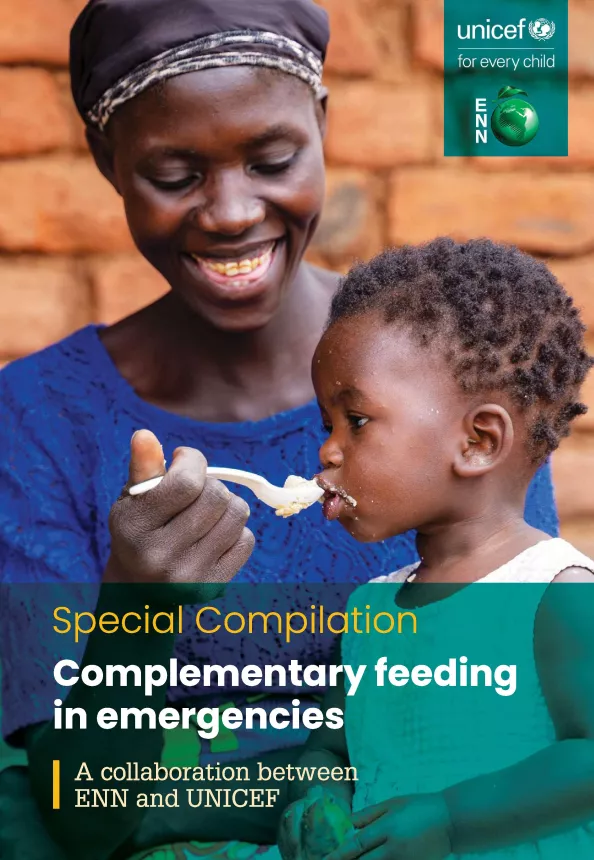Complementary feeding in emergencies
Publication details
Special compilation
Together with colleagues from UNICEF, we are delighted to present this special Field Exchange (FEX) compilation of complementary feeding programming in fragile and emergency contexts. Following on from our successful ‘Special Section’ focusing on this topic in issue 68, we felt that it was important to expand upon the evidence presented, given the wealth of experiences of complementary feeding programming in such contexts, and provide an array of additional experiences documenting actions for improving the diets of young children in fragile settings.
In this compilation we build upon the special section in issue 68 with an array of novel content which makes for essential reading. Examples from Burundi, Ethiopia and Tanzania show us that cash transfers delivered alongside additional interventions can help address barriers to optimal feeding by addressing financial constraints, access to nutritious foods, and improving care and feeding practices, especially when interventions are jointly designed and implemented by social protection and nutrition colleagues. UNICEF highlight in their new programming guidance that small-quantity lipid-based nutrient supplements (SQ-LNS) should be used as part of an integrated approach targeting younger children in fragile contexts, especially those with high burdens of undernutrition, to support optimal complementary feeding by improving nutrient density of the diet. UNICEF also provides guidance on home fortification using SQ-LNS and micronutrient powders highlighting the importance of an integrated approach.
A cost-of-the-diet assessment in Nigeria found that the availability of nutrient-rich foods is not the main barrier to typically poor households obtaining a nutritious diet, rather that there was an affordability gap of around 120% of their income for both nutritious food and non-food items. In addition, a systematic review found that exclusively breastfed infants did not require additional water, even in hot weather, but that hot temperatures may negatively influence feeding practices due to misconceptions and circumstances that make exclusive breastfeeding difficult. Meanwhile regarding communication around, and support for, complementary feeding, in India it was found that while digital messaging is a promising model to reach women with critical messages, for example around infant and young child feeding, it cannot replace the critical interpersonal communication offered by frontline workers. In addition, a study in Rwanda highlighted the positive contribution of peer-to-peer activities in improving IYCF practices (this article was previously available online only).
There is a critical need to understand and share learning about complementary feeding programming, especially in challenging contexts. This is particularly timely given the recent release of the updated WHO Guideline for Complementary Feeding of Infants and Young Children 6-23 Months of Age, the multiple crises we are facing around the world and the compounding effects of climate-induced emergencies (including droughts and environmental degradation), widespread conflict including the war in Ukraine and conflict in the State of Palestine, and the continuing socioeconomic impacts of the COVID-19 pandemic. We hope that this compilation will help you in your efforts to design ambitious and effective programmes to protect and improve the diets of children in early childhood, especially within emergency contexts and protect our most vulnerable populations from malnutrition. Happy reading!
